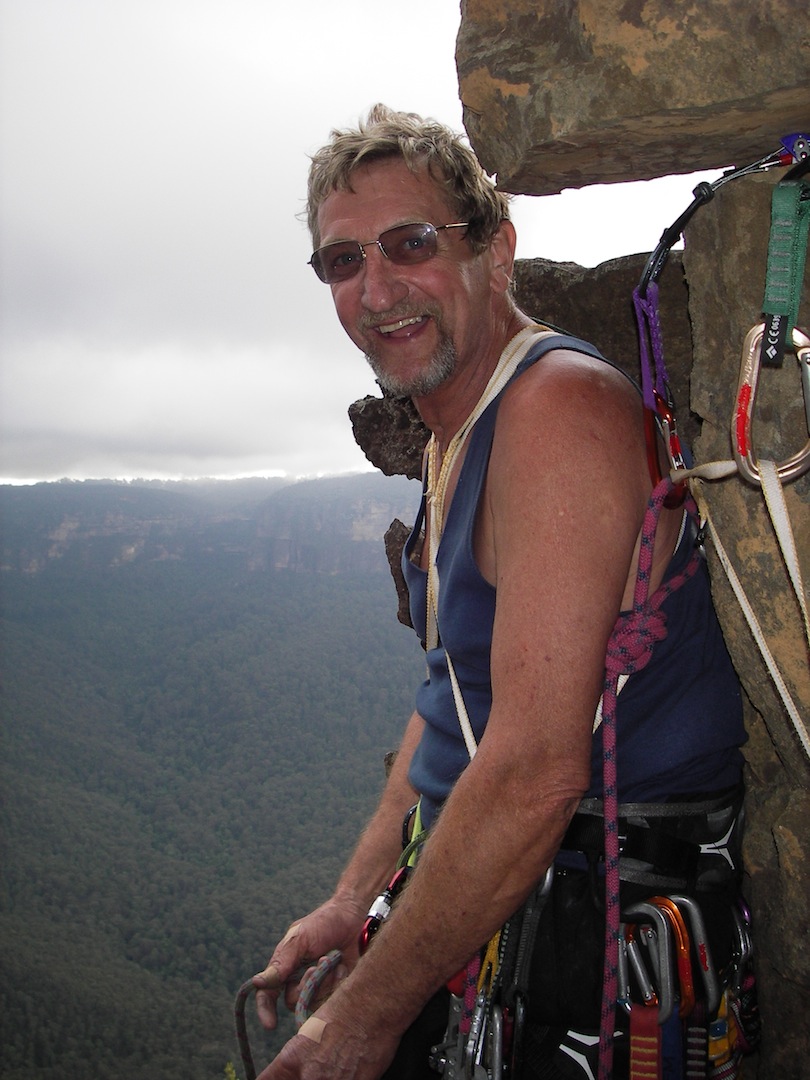John Ewbank, 1948–2013

John Ewbank, legend of Australian rock climbing, died in New York on December 2, 2013. Few other climbers could lay claim to doing the first ascent of the hardest route on a continent, inventing the system by which it was graded, and then seeing that grading system be adopted in three countries and recognized worldwide.
Born in England in 1948, Ewbank learned to climb in Yorkshire before emigrating to Australia as a teenager. In the early 1960s he was lured to the gray and orange sandstone escarpments of the Blue Mountains by members of the Sydney Rock Climbing Club. The Blue Mountains quickly became his spiritual home, as well as the center of his legacy to Australian climbing.
The young English lad paired up with the best climbers of the day and set about establishing dozens of hard new climbs. Aid was giving way to free climbing, and Ewbank quickly became one of Australia’s greatest proponents of the new methods. A trip back to England greatly influenced him and, much to the consternation of the old guard, he became obsessed with training and using newfangled chocks and nuts as protection.
Ewbank became an early, almost evangelical promoter of clean climbing, but gear was still primitive and almost impossible to get in Australia. The unstoppable Ewbank developed his own early chocks, known as Crackers, which he manufactured and sold to other climbers throughout the country. He wrote articles promoting the use of natural protection, confronted those who still used pitons, and railed against excessive bolting.
Ewbank’s impact on the scene was dramatic. He not only pushed grades far higher than they had ever been but also rewrote the grading system, scrapping the convoluted British system used in Australia at the time. The open-ended Ewbank Grading System was introduced in his 1967 guidebook, Rock Climbs in the Blue Mountains, and was immediately adopted throughout the continent. It is now also used in New Zealand and South Africa.
By 1967, Ewbank had established hundreds of hard routes throughout Australia. Many were in the grade 17–21 range—levels unthinkable only a few years earlier. But it was at Mt. Piddington that Ewbank probably made the most impact. His hardest climb, the Janicepts, was graded 21 with rests in 1966. So far ahead of the game was Ewbank that the rests were not eliminated for another eight years. It is a sign of the respect in which Ewbank is held that Mt. Piddington, vast sections of the Katoomba Cliffs, and Dogface are still considered to be his domain, and have resisted the onslaught of the bolt.
Ewbank gradually retired from climbing during the early 1970s and eventually moved to New York to pursue a career as a singer and songwriter. He was a true giant of Australian climbing, and his legacy continues to shape entire generations of climbers. His unique character will be sadly missed.
Glenn Short


